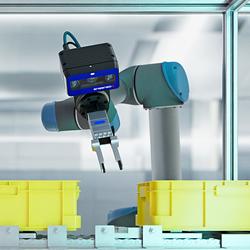Robot Density Rises Globally – International Federation of Robotics
“Robot density is an excellent standard for comparison in order to take into account the differences in the automation degree of the manufacturing industry in various countries,†says Junji Tsuda, President of the International Federation of Robotics.
FRANKFURT, Germany--(BUSINESS WIRE)--The automation of production is accelerating around the world:
"Robot density is an excellent standard for comparison in order to take into account the differences in the automation degree of the manufacturing industry in various countries," says Junji Tsuda, President of the International Federation of Robotics.
Asia
The development of robot density in China was the most dynamic in the world. Due to the significant growth of robot installations, particularly between 2013 and 2016, the density rate rose from 25 units in 2013 to 68 units in 2016. Today, Chinas robot density ranks 23rd in the world. Worldwide, the Republic of Korea has by far the highest robot density in the manufacturing industry - a position the country has held since 2010. The countrys robot density exceeds the global average by a good eight-fold (631 units). This high growth rate is the result of continued installations of a high volume of robots particularly in the electrical/electronics industry and in the automotive industry. Japan ranked fourth in the world: In 2016, 303 robots were installed per 10,000 employees in the manufacturing industry - following Germany ranking 3rd (309 units). Japan is the worldÂ's predominant industrial robot manufacturer
North America
Robot density in the United States increased significantly to 189 robots in 2016 - the country ranks seventh in the world. Since 2010, the necessary modernization of domestic production facilities has boosted robot sales in the United States. The automotive industry still leads as the main customer of industrial robots with about 52 percent of total sales in 2016. Robot sales in the United States will continue to increase between 2017 and 2020 by at least 15 percent on average per year.
Europe
EuropeÂ's most automated country is Germany - ranking 3rd worldwide with 309 units. The annual supply and the operational stock of industrial robots in 2016 had a share of 36 percent and 41 percent respectively of total robot sales in Europe. France has a robot density of 132 units (ranking 18th in the world), which is well above the global average of 74 robots - but relatively weak compared to other EU countries. As the only G7 country - the UK has a robot density below the world average of 74 units with 71 units, ranking 22nd.
Please find the full text version here: https://ifr.org/ifr-press-releases/
About IFR
The International Federation of Robotics: www.ifr.org
Featured Product

3D Vision: Ensenso B now also available as a mono version!
This compact 3D camera series combines a very short working distance, a large field of view and a high depth of field - perfect for bin picking applications. With its ability to capture multiple objects over a large area, it can help robots empty containers more efficiently. Now available from IDS Imaging Development Systems. In the color version of the Ensenso B, the stereo system is equipped with two RGB image sensors. This saves additional sensors and reduces installation space and hardware costs. Now, you can also choose your model to be equipped with two 5 MP mono sensors, achieving impressively high spatial precision. With enhanced sharpness and accuracy, you can tackle applications where absolute precision is essential. The great strength of the Ensenso B lies in the very precise detection of objects at close range. It offers a wide field of view and an impressively high depth of field. This means that the area in which an object is in focus is unusually large. At a distance of 30 centimetres between the camera and the object, the Z-accuracy is approx. 0.1 millimetres. The maximum working distance is 2 meters. This 3D camera series complies with protection class IP65/67 and is ideal for use in industrial environments.
